
Cervinia: The Alpine Jewel of Italy
Discover Cervinia, Italy's Alpine Jewel: A paradise for skiing, hiking, and breathtaking views of the Matterhorn.
Nestled in the Aosta Valley, Cervinia stands as one of Italy's premier alpine destinations. Known for its breathtaking views of the Matterhorn, Cervinia offers a unique blend of natural beauty and outdoor adventure. Whether you're an avid skier or a nature enthusiast, Cervinia promises an unforgettable experience. In the winter, Cervinia transforms into a snow-covered paradise. Its extensive ski slopes are suitable for all levels, from beginners to experts. The resort is part of the Matterhorn Ski Paradise, allowing skiers to glide seamlessly between Italy and Switzerland. Don't miss the opportunity to ski down one of the longest runs in Europe, stretching over 20 kilometers. Summer in Cervinia is equally captivating. The snow melts to reveal lush green meadows, perfect for hiking and mountain biking. The Golf Club del Cervino, one of the highest golf courses in Europe, offers a unique golfing experience with stunning mountain views. For a touch of history, visit the charming old town of Breuil-Cervinia, where traditional Alpine architecture meets modern amenities.
Local tips in Cervinia
- Visit in late December or early January for the best snow conditions.
- Book your ski passes and equipment rentals in advance to avoid long queues.
- Explore the local cuisine; try the traditional dishes like fondue and raclette.
- Don't forget to carry layers of clothing; weather in the mountains can change quickly.
- Take a day trip to Zermatt in Switzerland, accessible via the Matterhorn Glacier Ride.
Cervinia: The Alpine Jewel of Italy
Nestled in the Aosta Valley, Cervinia stands as one of Italy's premier alpine destinations. Known for its breathtaking views of the Matterhorn, Cervinia offers a unique blend of natural beauty and outdoor adventure. Whether you're an avid skier or a nature enthusiast, Cervinia promises an unforgettable experience. In the winter, Cervinia transforms into a snow-covered paradise. Its extensive ski slopes are suitable for all levels, from beginners to experts. The resort is part of the Matterhorn Ski Paradise, allowing skiers to glide seamlessly between Italy and Switzerland. Don't miss the opportunity to ski down one of the longest runs in Europe, stretching over 20 kilometers. Summer in Cervinia is equally captivating. The snow melts to reveal lush green meadows, perfect for hiking and mountain biking. The Golf Club del Cervino, one of the highest golf courses in Europe, offers a unique golfing experience with stunning mountain views. For a touch of history, visit the charming old town of Breuil-Cervinia, where traditional Alpine architecture meets modern amenities.
When is the best time to go to Cervinia?
Iconic landmarks you can’t miss
Cervinia Valtournenche
Experience the winter wonderland of Cervinia Valtournenche, a premier ski resort in Italy's Aosta Valley, where adventure meets breathtaking alpine beauty.
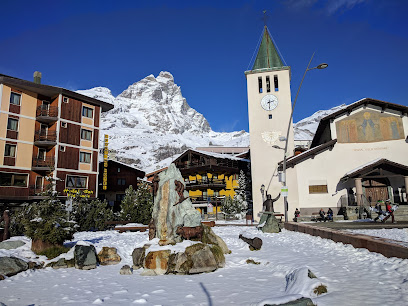
Lago Blu
Discover the breathtaking beauty of Lago Blu, a must-visit alpine lake in Aosta Valley, perfect for relaxation and outdoor adventures.
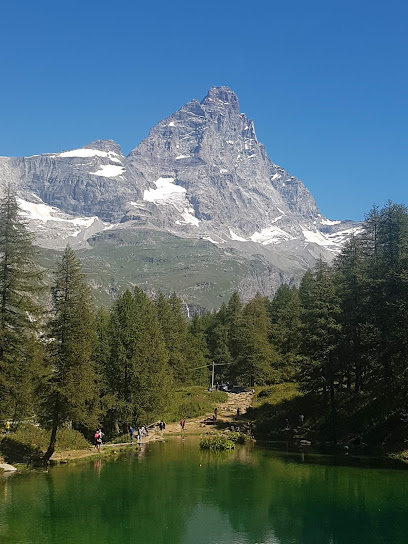
Verrès Castle
Discover the enchanting Verrès Castle in the Aosta Valley, a historical gem with stunning views and captivating medieval architecture.
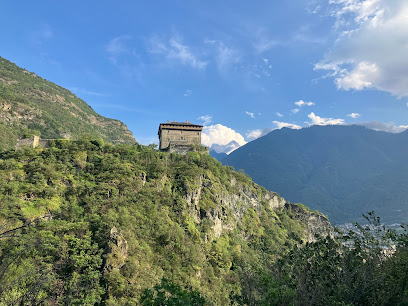
Plan Maison
Discover Plan Maison, a premier ski resort in the Aosta Valley, offering exhilarating slopes, cozy spots, and breathtaking alpine views.
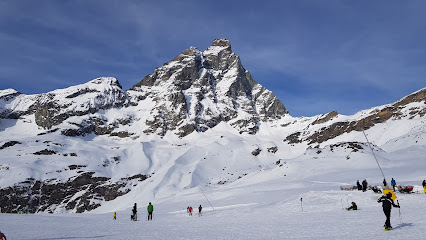
Chalet Etoile
Discover Chalet Etoile in Cervinia for an authentic Italian dining experience amidst stunning mountain views, ideal for food lovers and adventurers.
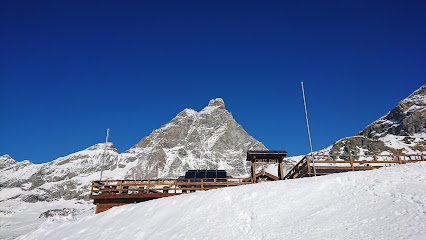
Ristorante Bar Bricole
Experience authentic Italian cuisine in the enchanting Valtournenche at Ristorante Bar Bricole, where local flavors come alive.
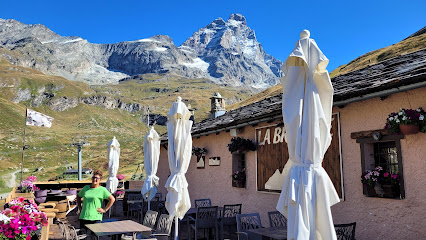
Cervino Spa
Discover exhilarating skiing and breathtaking views at Cervino Spa, an unforgettable resort in the heart of the Aosta Valley.
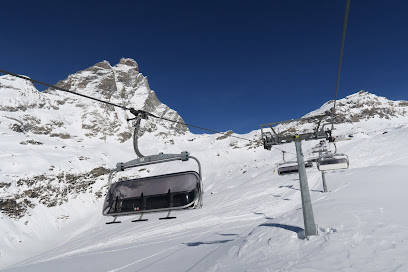
Hotel Europa - Cervinia
Discover the charm of Hotel Europa in Cervinia, where luxury meets adventure in the stunning Aosta Valley.

Metzelet Bar Ristorante
Discover the culinary delights of Metzelet Bar Ristorante in Valtournenche, where authentic Italian cuisine meets stunning alpine views.
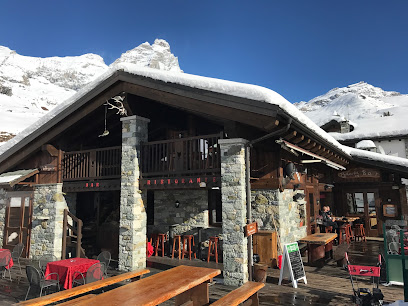
Refuge du Théodule
Discover the enchanting Refuge du Théodule, a perfect escape in the Aosta Valley for hiking, skiing, and savoring mountain hospitality.

Rifugio Duca degli Abruzzi
Experience the beauty of the Alps at Rifugio Duca degli Abruzzi, a cozy mountain cabin perfect for outdoor adventures and local culinary delights.

Ristorante Pizzeria La Grotta
Experience authentic Italian dining at Ristorante Pizzeria La Grotta, where delicious pizza and breathtaking views of the Aosta Valley await.
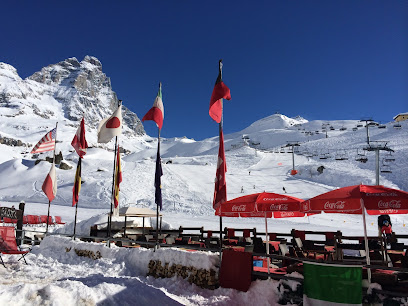
Igloo
Experience authentic Italian flavors amidst breathtaking alpine landscapes at Igloo in Valtournenche, Aosta Valley.
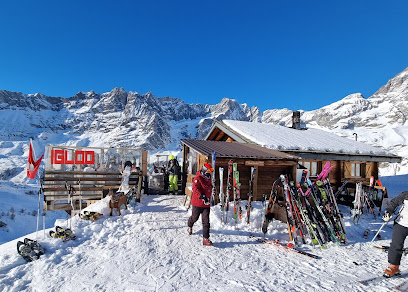
Art Hotel Grivola
Experience the charm of Breuil-Cervinia at Art Hotel Grivola, where comfort, art, and stunning mountain views come together for an unforgettable stay.
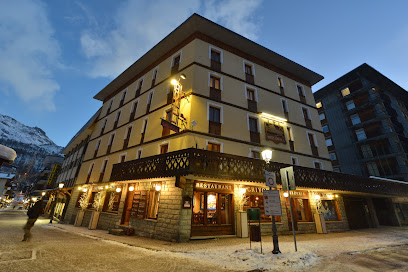
Jour Et Nuit
Discover the flavors of Italy at Jour Et Nuit, where exquisite Italian cuisine and succulent steaks await in Breuil-Cervinia's charming setting.
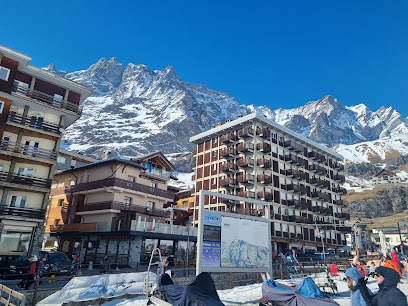
Unmissable attractions to see
Lago Blu
Discover the breathtaking beauty of Lago Blu in Breuil-Cervinia, an alpine lake surrounded by towering mountains and lush landscapes, perfect for outdoor adventures.

Plan Maison
Experience the thrill of skiing at Plan Maison, a premier ski resort nestled in the breathtaking Aosta Valley, where stunning slopes and majestic views await.
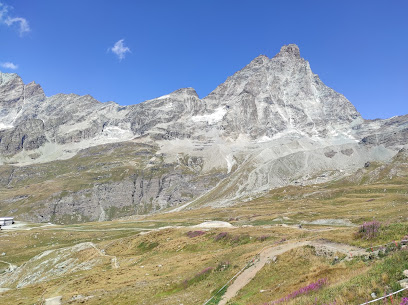
Criptoportico Forense
Discover the ancient Roman marvel of Criptoportico Forense in Aosta, where history and architecture intertwine in breathtaking harmony.
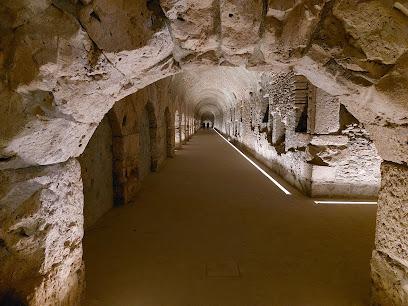
Matterhorn Museum - Zermatlantis
Explore the rich history of Zermatt and the iconic Matterhorn at the Matterhorn Museum - Zermatlantis, a must-visit tourist attraction in Switzerland.
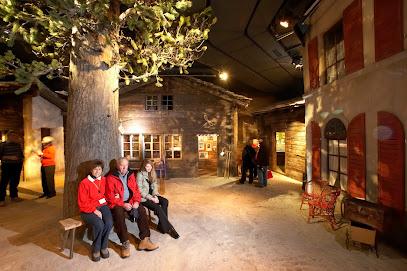
Matterhorn Museum - Zermatlantis
Explore Zermatt's fascinating history at the Matterhorn Museum - Zermatlantis, where culture meets the majesty of the Alps.

Gorner Gorge
Explore the breathtaking beauty of Gorner Gorge in Zermatt, Switzerland, a natural wonder featuring stunning cliffs and crystal-clear waters.

Castello Gamba
Explore the captivating Castello Gamba, a majestic castle in Aosta Valley blending history with modern art in stunning surroundings.
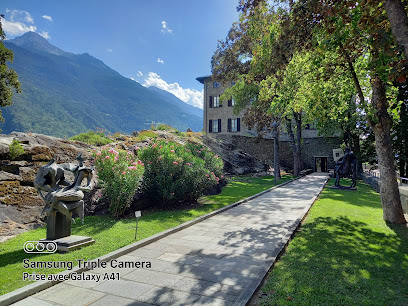
La Passerelle à Farinet
Experience breathtaking views and adventure at La Passerelle à Farinet, a stunning pedestrian bridge in the heart of the Swiss Alps.
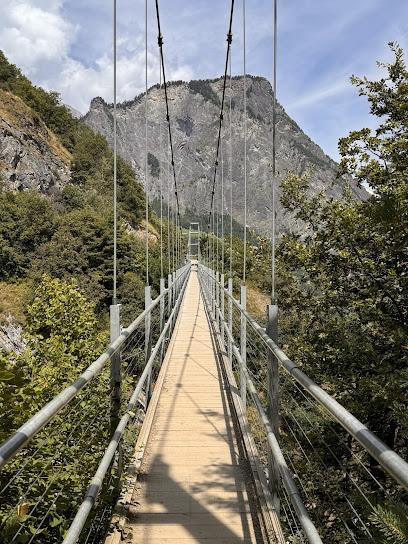
Grotte delle Busserailles
Explore the breathtaking Grotte delle Busserailles, where nature’s beauty and geological wonders unite in the heart of Aosta Valley.
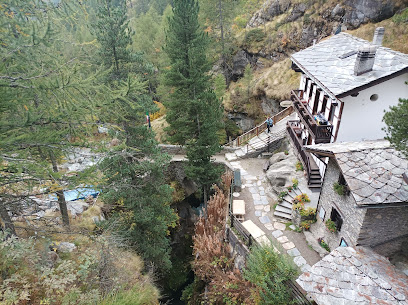
Cervino Spa
Discover the breathtaking Cervino Spa, where adventure meets relaxation in the stunning Aosta Valley.
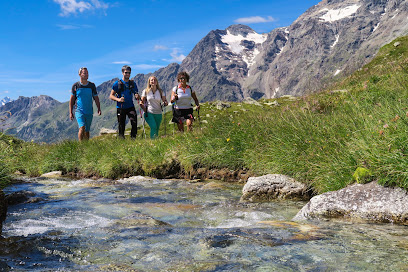
Canoe and Rafting Center Monrosa
Experience the thrill of adventure sports at Canoe and Rafting Center Monrosa in Balmuccia, where nature meets excitement in breathtaking harmony.

Matterhorn Glacier Palace
Experience the stunning beauty of the Matterhorn Glacier Palace, where art meets nature in a breathtaking alpine setting.
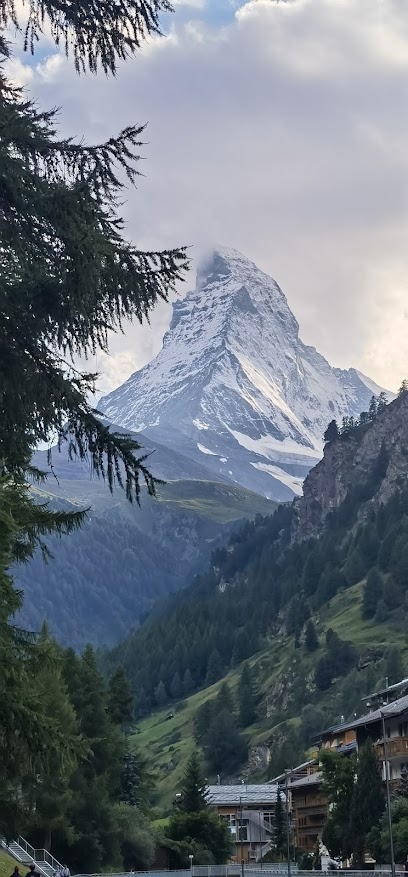
Bike Park Cervino Partenze Percorsi MTB da Telecabina Cime Bianche Laghi
Discover thrill and breathtaking views at Bike Park Cervino, the ultimate mountain biking destination in the Aosta Valley.
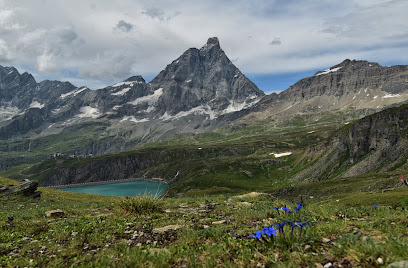
Refuge du Théodule
Discover the serene charm of Refuge du Théodule, a cozy mountain cabin in the heart of the Aosta Valley, perfect for hiking and relaxation.

Pfarrkirche St. Mauritius
Discover the beauty and spirituality of Pfarrkirche St. Mauritius, a stunning Catholic church nestled in the heart of Zermatt, Switzerland.
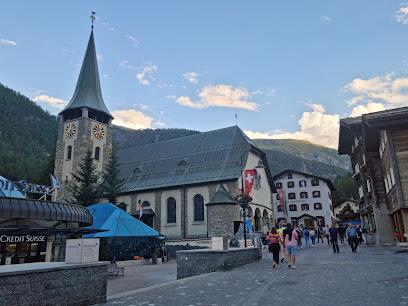
Essential places to dine
Chalet Etoile
Discover Chalet Etoile in Cervinia - where authentic Italian cuisine meets breathtaking mountain views for an unforgettable dining experience.

Foyer des Guides
Discover authentic Italian cuisine and vibrant bar culture at Foyer des Guides in Valtournenche's stunning Aosta Valley.
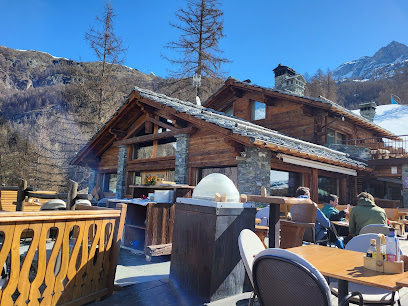
Ristorante Bar Bricole
Experience authentic Italian cuisine at Ristorante Bar Bricole in Valtournenche's stunning Aosta Valley – where flavors meet breathtaking views.
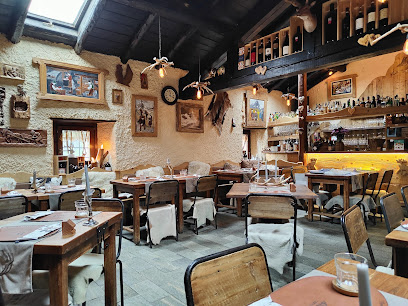
Pizzeria Sotto zero
Discover authentic Italian flavors at Pizzeria Sotto Zero in Valtournenche – where every pizza tells a story.
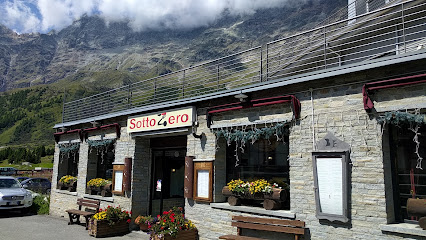
Metzelet Bar Ristorante
Experience authentic Italian flavors and breathtaking alpine views at Metzelet Bar Ristorante in Valtournenche.
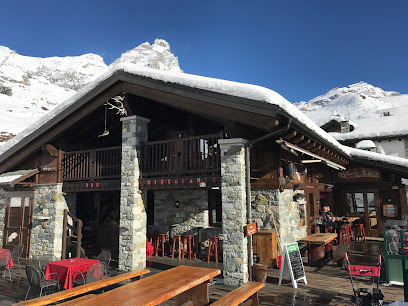
Ristorante Le Blason
Experience authentic Italian flavors at Ristorante Le Blason in Breuil-Cervinia, where every dish tells a story of tradition and passion.
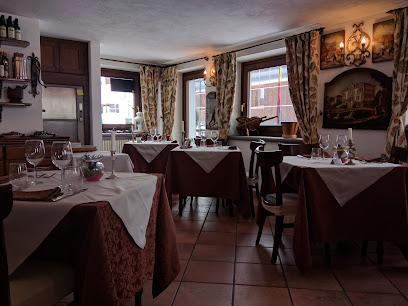
Ristorante Bontadini
Experience authentic Italian cuisine at Ristorante Bontadini in Cervinia—where every meal is paired with stunning mountain views.
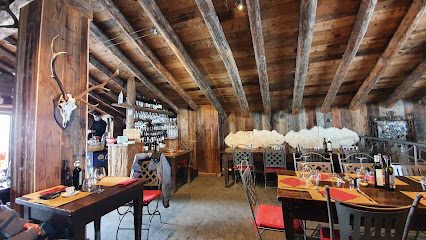
Restaurant Alpage
Experience authentic Italian cuisine with stunning mountain views at Restaurant Alpage in Breuil-Cervinia.
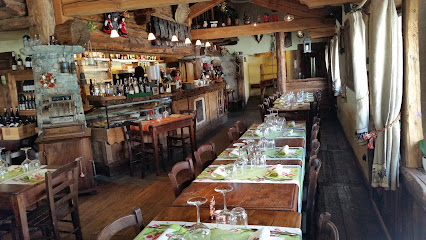
Brasserie Du Cervin
Experience authentic Italian alpine cuisine at Brasserie Du Cervin in Valtournenche – where every dish tells a story.
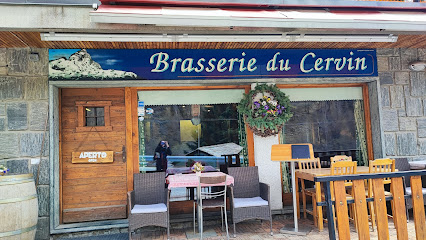
Ymeletrob
Discover authentic Italian cuisine at Ymeletrob in Valtournenche – where delicious pizza meets warm hospitality in stunning mountain surroundings.

Ristorante Pizzeria La Grotta
Experience authentic Italian cuisine at Ristorante Pizzeria La Grotta in Valtournenche - where delicious pizza meets stunning mountain views.
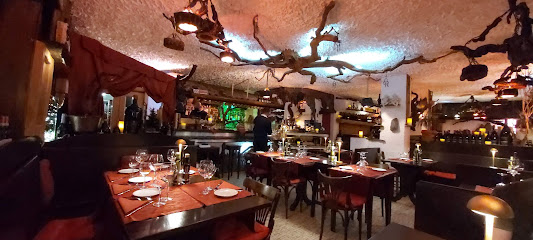
Igloo
Discover Igloo: A delightful Italian restaurant in Valtournenche offering exquisite cuisine and stunning mountain views.
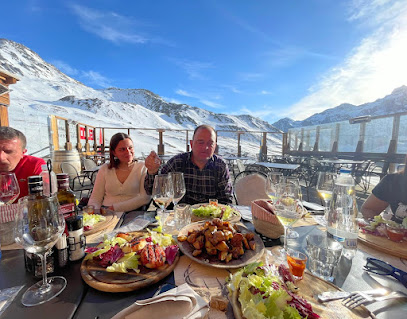
Le Bistrot de l'Abbé
Discover authentic Italian flavors at Le Bistrot de l'Abbé in Breuil-Cervinia's stunning alpine landscape.
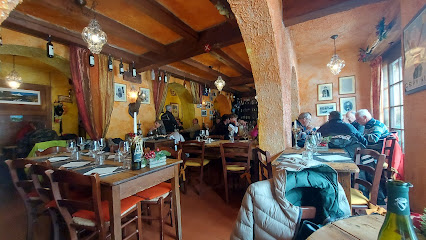
Jour Et Nuit
Discover authentic Italian flavors paired with exquisite steaks at Jour Et Nuit in Breuil-Cervinia's breathtaking alpine setting.
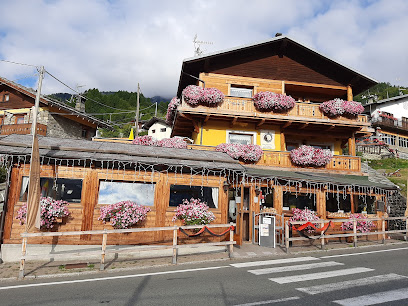
Cervinia Restaurant
Discover authentic Italian flavors at Cervinia Restaurant in Rome - where every dish tells a story.
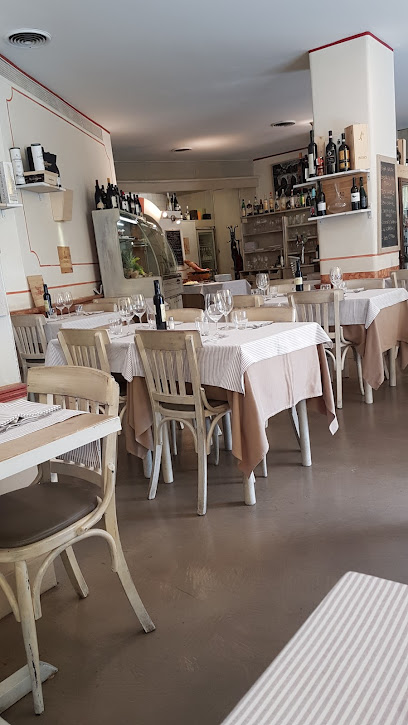
Markets, malls and hidden boutiques
Supermercato Crai
Explore the convenience of Supermercato Crai in Breuil Cervinia, offering local products, fresh produce, and unique crafts for every traveler.
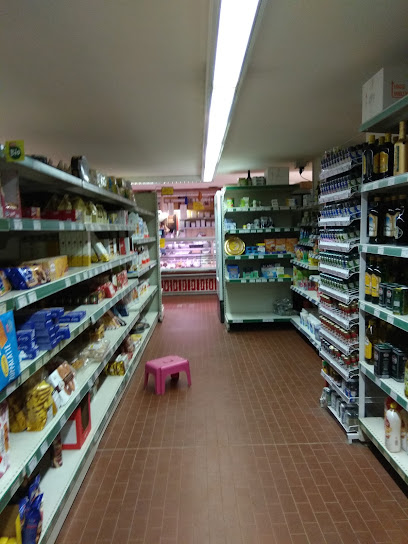
Cervinia Ski Service
Discover the ultimate winter experience at Cervinia Ski Service, your premier destination for ski gear and expert guidance in the Italian Alps.
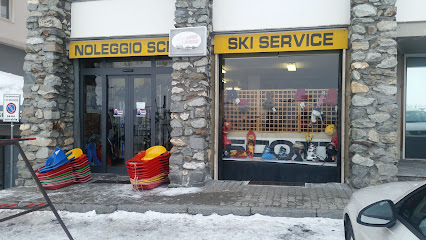
Sweet Side
Discover Sweet Side in Breuil-Cervinia: a haven of pastries, chocolates, and cocktails surrounded by the stunning Alps.
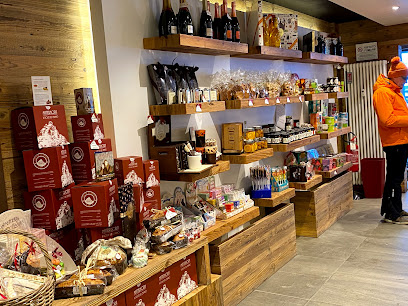
Casa del Miele / Honey Shop
Discover the sweet essence of Aosta Valley at Casa del Miele, a gourmet grocery store filled with artisan honey and local delicacies.
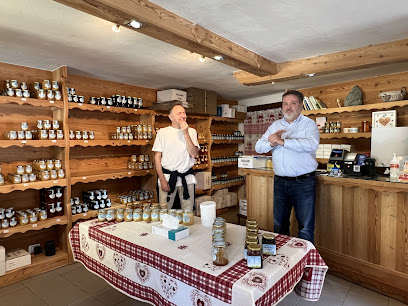
NOL SKI
Experience the thrill of skiing in Breuil-Cervinia with NOL SKI, your go-to destination for ski and bicycle rentals in the stunning Aosta Valley!
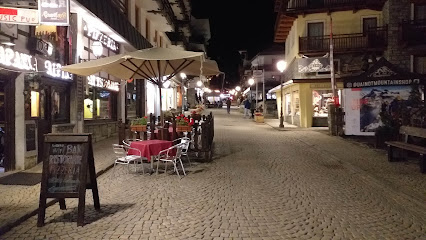
White Rent - Skicool
Discover unparalleled skiing adventures at White Rent - Skicool in Cervinia, your top destination for ski gear and expert advice.

assistence, bike hire and repairs
Discover Genzianella Sport for top-notch ski rentals and expert advice in the stunning Breuil-Cervinia ski resort, Aosta Valley, Italy.

Fratelli Gentili
Discover authentic Italian flavors at Fratelli Gentili, the charming grocery store in Rome offering local delicacies and artisanal products.

Sports Center Team srl
Explore the best sporting goods in Aosta Valley at Sports Center Team srl, your go-to store for outdoor adventure gear and expert advice.

Adriano Sport
Explore the Aosta Valley with Adriano Sport - your ultimate destination for high-quality outdoor gear and expert advice in Valtournenche.
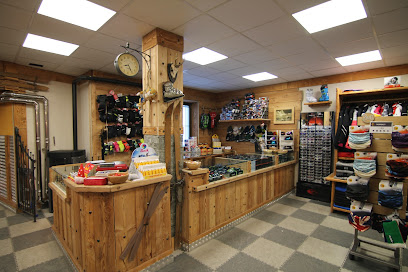
Les Plaisirs - Bakery and more
Experience the authentic taste of Italy at Les Plaisirs, Breuil-Cervinia's charming bakery offering exquisite pastries and delightful breads.
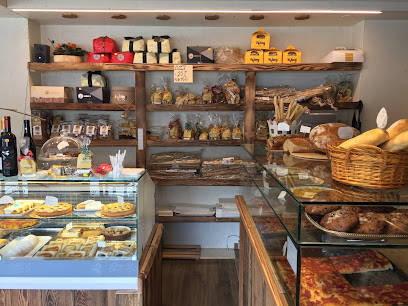
Top One
Experience premier ski and bicycle rentals at Top One in Valtournenche, where adventure meets breathtaking Aosta Valley landscapes.
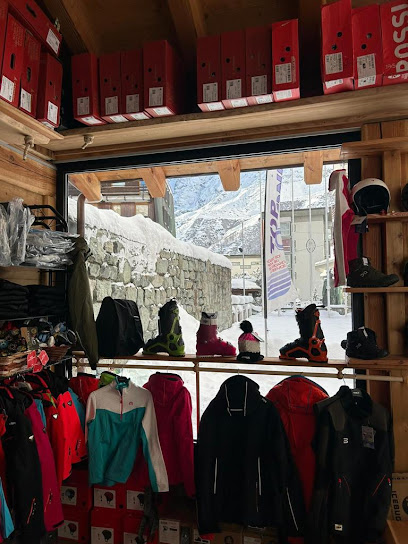
Valle Ski Service
Experience the ultimate winter adventure at Valle Ski Service, your go-to destination for ski and snowboarding equipment in the Aosta Valley.

Alimentari
Discover the heart of Italian cuisine at Alimentari in Albano Laziale, featuring fresh local produce and traditional delicacies.
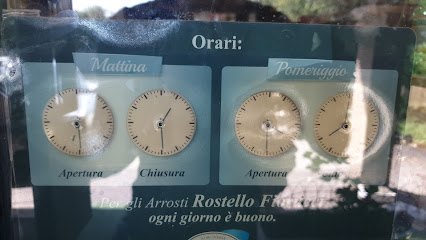
Uainot Shop Cervinia
Explore the Aosta Valley with Uainot Shop Cervinia - your ultimate destination for sporting goods, rentals, and expert advice for all your outdoor adventures.
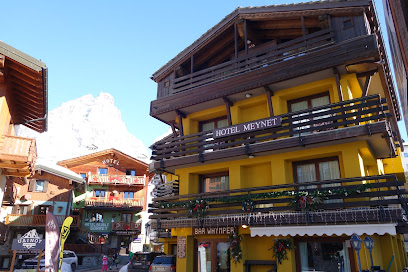
Essential bars & hidden hideouts
Chalet Etoile
Discover authentic Italian cuisine at Chalet Etoile, a charming restaurant in Cervinia with breathtaking mountain views and a cozy atmosphere.
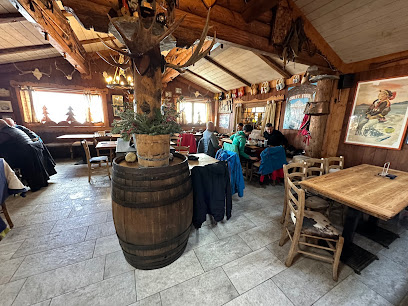
Ristorante Bar Bricole
Experience authentic Italian dining at Ristorante Bar Bricole, nestled in the breathtaking Valtournenche mountains, where flavor meets stunning views.
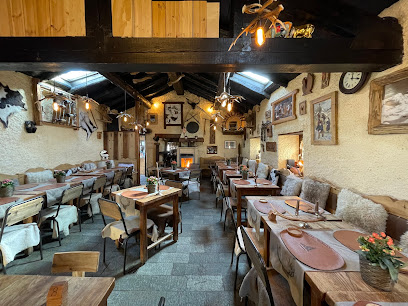
Cafè Cervinia
Experience the charm of Italian café culture at Cafè Cervinia in Voghera, where cozy ambiance meets delightful cuisine.
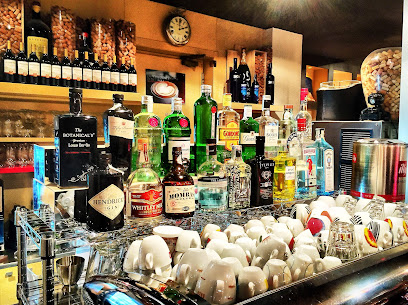
Metzelet Bar Ristorante
Experience authentic Italian cuisine in Valtournenche at Metzelet Bar Ristorante, offering local specialties and an extensive wine selection.
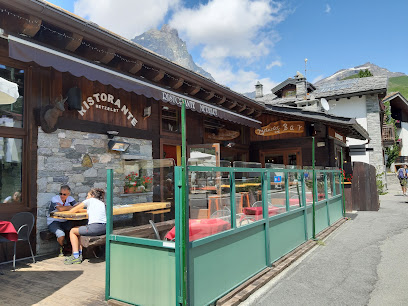
Ristorante Le Blason
Discover the authentic taste of Italy at Ristorante Le Blason, nestled in the stunning landscapes of Breuil-Cervinia, Aosta Valley.

Ristorante Bontadini
Experience authentic Italian cuisine with stunning mountain views at Ristorante Bontadini, a must-visit restaurant in Cervinia.
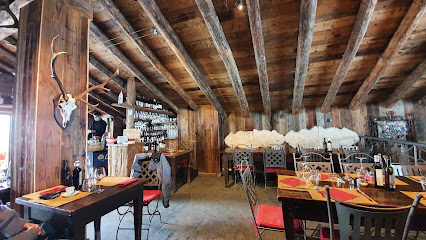
Rocce Nere
Discover the taste of the Alps at Rocce Nere, where traditional Italian cuisine meets breathtaking mountain views in Breuil-Cervinia.
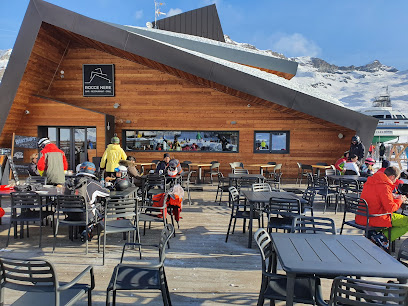
Ymeletrob
Experience authentic Italian dining at Ymeletrob, a charming bar and restaurant in Valtournenche, known for its delicious pizzas and lively atmosphere.
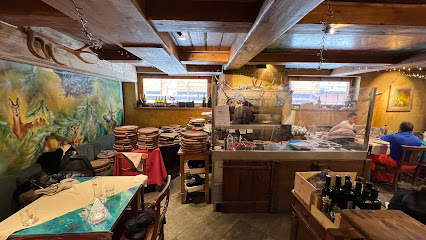
Ristorante Pizzeria La Grotta
Indulge in authentic Italian flavors at Ristorante Pizzeria La Grotta, a cherished dining spot in the heart of Valtournenche, Aosta Valley.
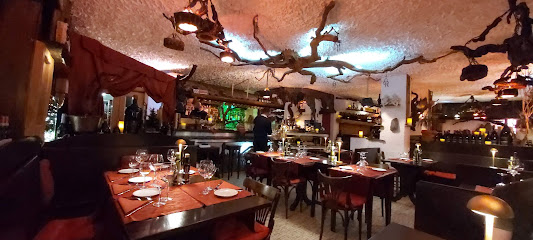
Igloo
Experience authentic Italian cuisine at Igloo, nestled in the breathtaking Aosta Valley, a perfect retreat for tourists exploring the Alps.

Jour Et Nuit
Discover the perfect blend of Italian cuisine and steakhouse flavors at Jour Et Nuit in Breuil-Cervinia.
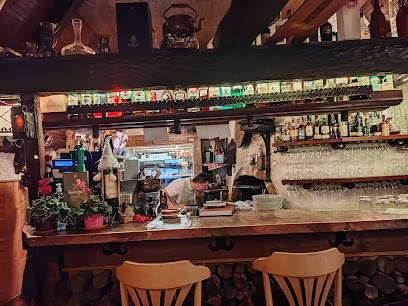
Cervinia Restaurant
Experience authentic Italian and Roman cuisine at Cervinia Restaurant in Rome, featuring fresh seafood and a warm, inviting atmosphere.
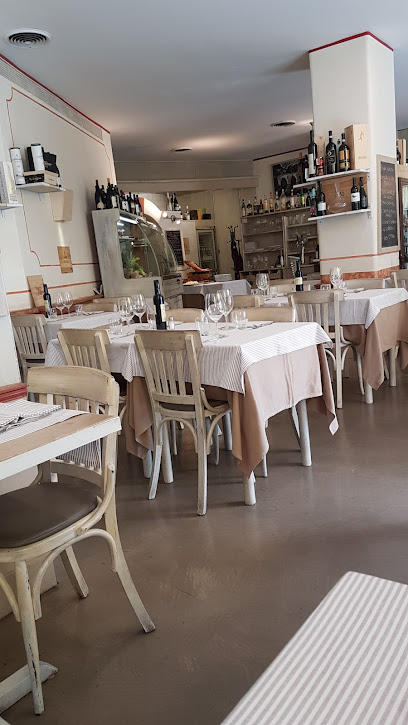
Yeti Bar
Experience the charm of Yeti Bar in Valtournenche, a cozy retreat for drinks and local ambiance in the stunning Aosta Valley.
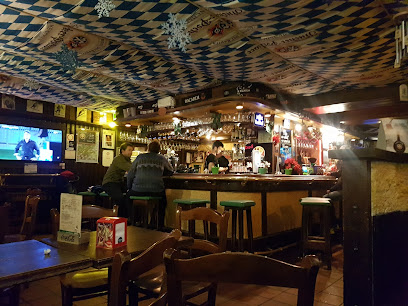
Lino's Ristorante Apres Ski
Experience the best of Italian cuisine at Lino's Ristorante Apres Ski in Breuil-Cervinia, where taste meets tradition in a cozy, vibrant setting.
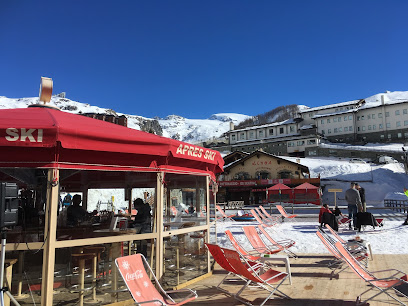
CHALET HOTEL DRAGON RESTAURANT & BAR
Discover the charm of Chalet Hotel Dragon Restaurant & Bar, where Alpine comfort meets exceptional cuisine in Breuil-Cervinia's stunning landscape.

Local Phrases about Cervinia
-
- HelloCiao
[chow] - GoodbyeArrivederci
[ah-ree-veh-DEHR-chee] - YesSì
[see] - NoNo
[noh] - Please/You're welcomePer favore
[pehr fah-VOH-reh] - Thank youGrazie
[GRAHT-zyeh] - Excuse me/SorryMi scusi
[mee SKOO-zee] - How are you?Come stai?
[KOH-meh stai] - Fine. And you?Bene. E tu?
[BEH-neh. eh too] - Do you speak English?Parli inglese?
[PAHR-lee een-GLEH-zeh] - I don't understandNon capisco
[nohn kah-PEES-koh]
- HelloCiao
-
- I'd like to see the menu, pleaseVorrei vedere il menu, per favore
[vohr-RAY veh-DEH-reh eel MEH-noo, pehr fah-VOH-reh] - I don't eat meatNon mangio carne
[nohn MAHN-joh KAR-neh] - Cheers!Salute!
[sah-LOO-teh] - I would like to pay, pleaseVorrei pagare, per favore
[vohr-RAY pah-GAH-reh, pehr fah-VOH-reh]
- I'd like to see the menu, pleaseVorrei vedere il menu, per favore
-
- Help!Aiuto!
[ah-YOO-toh] - Go away!Vai via!
[vy VY-ah] - Call the Police!Chiamate la polizia!
[kyah-MAH-teh lah poh-LEE-tsyah] - Call a doctor!Chiamate un dottore!
[kyah-MAH-teh oon doh-TOH-reh] - I'm lostMi sono perso
[mee SOH-noh PEHR-soh] - I'm illSono malato
[SOH-noh mah-LAH-toh]
- Help!Aiuto!
-
- I'd like to buy...Vorrei comprare...
[vohr-RAY kohm-PRAR-eh] - I'm just lookingSto solo guardando
[stoh SOH-loh gwar-DAHN-doh] - How much is it?Quanto costa?
[KWAHN-toh KOHS-tah] - That's too expensiveÈ troppo caro
[eh TROH-po KAH-roh] - Can you lower the price?Puoi abbassare il prezzo?
[POO-oy ahb-bah-SAH-reh eel PREH-tsoh]
- I'd like to buy...Vorrei comprare...
-
- What time is it?Che ora è?
[keh OH-rah eh] - It's one o'clockÈ l'una
[eh LOO-nah] - Half past (10)Sono le dieci e mezza
[SOH-noh leh dyeh-CHEE eh MEHT-sah] - MorningMattina
[mah-TEEN-ah] - AfternoonPomeriggio
[poh-meh-REE-joh] - EveningSera
[SEH-rah] - YesterdayIeri
[YEH-ree] - TodayOggi
[OH-jee] - TomorrowDomani
[doh-MAH-nee] - 1Uno
[OO-noh] - 2Due
[DOO-eh] - 3Tre
[TREH] - 4Quattro
[KWAHT-troh] - 5Cinque
[CHEEN-kweh] - 6Sei
[SAY] - 7Sette
[SEHT-teh] - 8Otto
[OH-toh] - 9Nove
[NOH-veh] - 10Dieci
[DYEH-chee]
- What time is it?Che ora è?
-
- Where's a/the...?Dov'è...?
[doh-VEH] - What's the address?Qual è l'indirizzo?
[kwahl eh leen-dee-REET-soh] - Can you show me (on the map)?Puoi mostrarmi (sulla mappa)?
[POO-oy mohs-TRAHR-mee SOOL-lah MAHP-pah] - When's the next (bus)?Quando è il prossimo (autobus)?
[KWAHN-doh eh eel PROHS-sih-moh OW-toh-boos] - A ticket (to ....)Un biglietto (per ....)
[oon beel-YET-toh pehr]
- Where's a/the...?Dov'è...?
History of Cervinia
-
Cervinia, located in the Aosta Valley in northwestern Italy, finds its roots in the ancient Walser community. The Walsers, a German-speaking mountain people, settled in the area around the 12th century. They were known for their unique alpine architecture, which can still be seen in some of the region's oldest buildings.
-
Originally known as Breuil, which means 'land of many waters' in the local dialect, the area was renamed Cervinia in the early 20th century. The name change was part of a larger movement to Italianize place names during the Fascist era. The name 'Cervinia' is derived from the Italian word for deer, 'cervo,' reflecting the area's rich wildlife.
-
One of Cervinia's most iconic landmarks is the Matterhorn, or Monte Cervino, which stands at 4,478 meters. The first successful ascent of the Matterhorn was in 1865 by a team led by Edward Whymper. This event marked a significant moment in mountaineering history and made Cervinia a focal point for climbers and adventurers.
-
The early 20th century saw Cervinia transform into a premier skiing destination. The construction of the first ski lifts in the 1930s and the establishment of the Breuil-Cervinia Ski Area in the 1950s attracted tourists from all over the world. Today, Cervinia boasts one of the largest and most well-connected ski areas in the Alps, linking with Zermatt in Switzerland.
-
During World War II, Cervinia was affected by the conflict as it lay on the border with Switzerland. The area saw the movement of partisans and became a strategic location for both Axis and Allied forces. After the war, Cervinia quickly resumed its development as a tourist destination, benefiting from the post-war economic boom.
-
In recent decades, Cervinia has continued to grow as a year-round tourist destination. The town has expanded its amenities to include luxury hotels, gourmet restaurants, and a variety of outdoor activities such as hiking, mountain biking, and paragliding. Cervinia remains a blend of rich history and modern tourism, attracting visitors who seek both adventure and cultural enrichment.
Cervinia Essentials
-
Cervinia is located in the Aosta Valley region of northwest Italy. The nearest international airport is Turin Airport, approximately 120 kilometers away. From the airport, you can take a train to Chatillon-Saint-Vincent and then a bus to Cervinia. Alternatively, you can rent a car for a more direct route. Milan Malpensa Airport and Geneva Airport are also viable options, each around 2 to 3 hours away by car.
-
Cervinia is a compact town, and many attractions are within walking distance. For exploring the surrounding areas, local buses and taxis are available. There are also shuttle services connecting Cervinia to nearby ski resorts. Renting a car can provide more flexibility, especially for visiting remote areas or traveling on your schedule.
-
The official currency in Italy is the Euro (EUR). Credit cards are widely accepted in hotels, restaurants, and shops in Cervinia. However, it's advisable to carry some cash for smaller establishments and local markets. ATMs are readily available in town, making it convenient to withdraw cash as needed.
-
Cervinia is generally a safe destination for tourists. However, standard precautions should be taken, such as avoiding poorly lit areas at night and keeping an eye on your belongings in crowded places. There are no specific high-crime areas targeting tourists in Cervinia, but it's always best to stay vigilant and aware of your surroundings.
-
In case of emergency, dial 112 for immediate assistance. Cervinia has a local medical clinic and a pharmacy for minor health issues. For more serious medical emergencies, the nearest hospital is in Aosta, approximately 60 kilometers away. It is recommended to have travel insurance that covers medical emergencies.
-
Fashion: Do dress warmly and in layers, especially during the winter season. Avoid wearing overly flashy or revealing clothing. Religion: Do respect local customs and traditions. When visiting churches, dress modestly and keep your voice low. Public Transport: Do be considerate of other passengers and give up your seat for elderly or disabled individuals. Don't make loud noises or consume food and drinks on public transport. Greetings: Do greet people with a simple 'Buongiorno' (Good morning) or 'Buonasera' (Good evening). A handshake is also customary. Eating & Drinking: Do try local specialties like polenta and fontina cheese. Don't rush meals; Italians enjoy their food and the dining experience.
-
To experience Cervinia like a local, visit the town's local markets and small family-owned restaurants. Enjoy the après-ski culture by relaxing in local bars and cafes after a day on the slopes. Engage in conversations with locals who are often willing to share insights about the best ski routes and hidden gems in the area. Don't miss the opportunity to take a cable car ride up to Plateau Rosà for stunning views of the Matterhorn.
Nearby Cities to Cervinia
-
Things To Do in Murren
-
Things To Do in Grindelwald
-
Things To Do in Montreux
-
Things To Do in Interlaken
-
Things To Do in Ascona
-
Things To Do in Locarno
-
Things To Do in Vevey
-
Things To Do in Thun
-
Things To Do in Lugano
-
Things To Do in Turin
-
Things To Do in Lausanne
-
Things To Do in Bern
-
Things To Do in Annecy
-
Things To Do in Geneva
-
Things To Do in Milan










